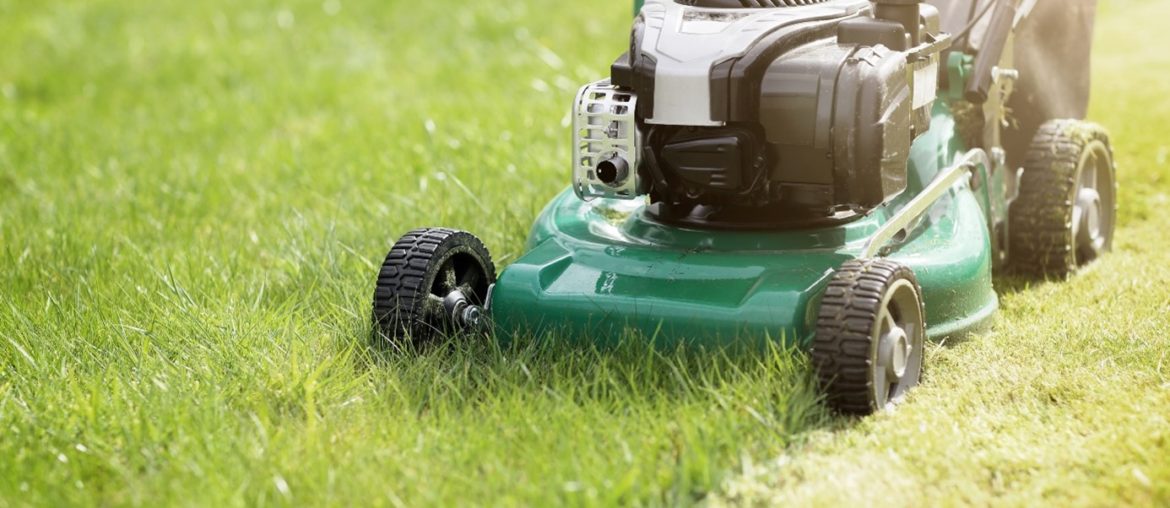Depending on the time of year, but also the nature of your lawn, you can mow it leaving the grass tall enough or, on the contrary, cut it flush. All mowers are adjustable, most often by acting on the wheels. Once properly adjusted, you get the height of cut that you think is most appropriate, but how do you adjust it? This is what we will explain to you.
How to adjust the cutting height?
It is the adjustment system of your mower that allows you to adapt the mowing to your real needs. These will not be the same if it is an essentially decorative lawn or if it is a lawn where you put games for children, for example. In addition, the cutting height will also vary with the seasons.
The main principle governing the mowing height is done by adjusting the height of the blade in relation to the ground level:
- The mower that you push and that is mounted on an air cushion is not adjustable since it does not have a wheel.
- The riding mower: you lower the deck or raise it by operating a lever from your seat.
- On a self-propelled or pushed (walk-behind) mower, you must first adjust the cutting height before you even start mowing. There are several types of adjustment:
Independent adjustment : It is the simplest of all, it is done wheel by wheel. Each wheel is adjusted one after the other. It’s a bit tedious and time-consuming to make, and it allows you to adjust if you want one side higher than the other so as to overlap a border for example.
Centralized adjustment : only one adjustment for the whole machine is necessary. A handle located on the housing adjusts the height of the machine. It is quick and easy, especially since an indicator allows you to visualize the height.
Axle adjustment : you have two axles, one at the rear and one at the front. Each axle can be adjusted to a specific height.
Adjusting the wheel position
The most commonly found system works with wheels that can be placed at different heights relative to the casing which supports the blade. On the simplest machines, the device allows the wheels to be adjusted one by one. You usually have access to 4 or 5 cutting heights.
The axis of the blade is mounted on a moving part, its movement is then controlled by a lever which can take several positions thanks to a notched sector. The axis of movement of the wheel axle support is then offset with respect to the latter.
A more rare device is based on the installation of tubular wedges of different height which are placed on the vertical axis which carries the wheels via calipers. You will find it most often on mowers with self-steering wheels in the front, rotating around a vertical axis. Some riding or self-propelled mowers offer a device that allows the four wheels to be adjusted in height by a lever. A set of rods or links connects all the adjustment sectors of the four wheels.
The only downside of this device, it does not allow you to adjust the four wheels differently. However, this function can be interesting at the edge of the lawn. This is the only time you will adjust your wheels to a different height.

Adjusting the blade guard
The vast majority of riding mowers are equipped with an adjustment system which acts on the blade and housing assembly. On this type of model, the movement is transmitted to the axis of the blade by a device which compensates for the variation. It then materializes in the form:
- From a sliding shaft
- A pulley that accepts a variation in the plane of the drive belt.
The movement is simultaneous with that of the housing so that the cutting adjustment is always optimal. It is the cartel which moves by actuating a single command. It acts on the eccentrics or the rods. You will also find a parallelogram system which carries the casing, the adjustment thereof is carried out using a rod with threaded ends or with an eccentric on one of the axes.
It can also happen that the lifting of the blade is carried out via a system of chains and arms which induces greater flexibility when the housing touches the ground. These different devices offer continuous adjustment and therefore the cutting height is more precise and regular. So you can easily adapt to uneven ground. You can raise the blade completely when traveling on a gravel path, for example.
On some high-end mowers, if you place the blade in the up position, it automatically brakes and disengages. This position is locked by a special notch and is marked differently than the cutting settings.
Adjustment on the cutting cylinders
The cutting height adjustment of the cylinders is done completely differently, they are knurled knob bolts that offer the possibility of tilting the cylinder in one direction or the other. It can also operate with a system of pins immobilized in the desired position by a pin.
Read also :








